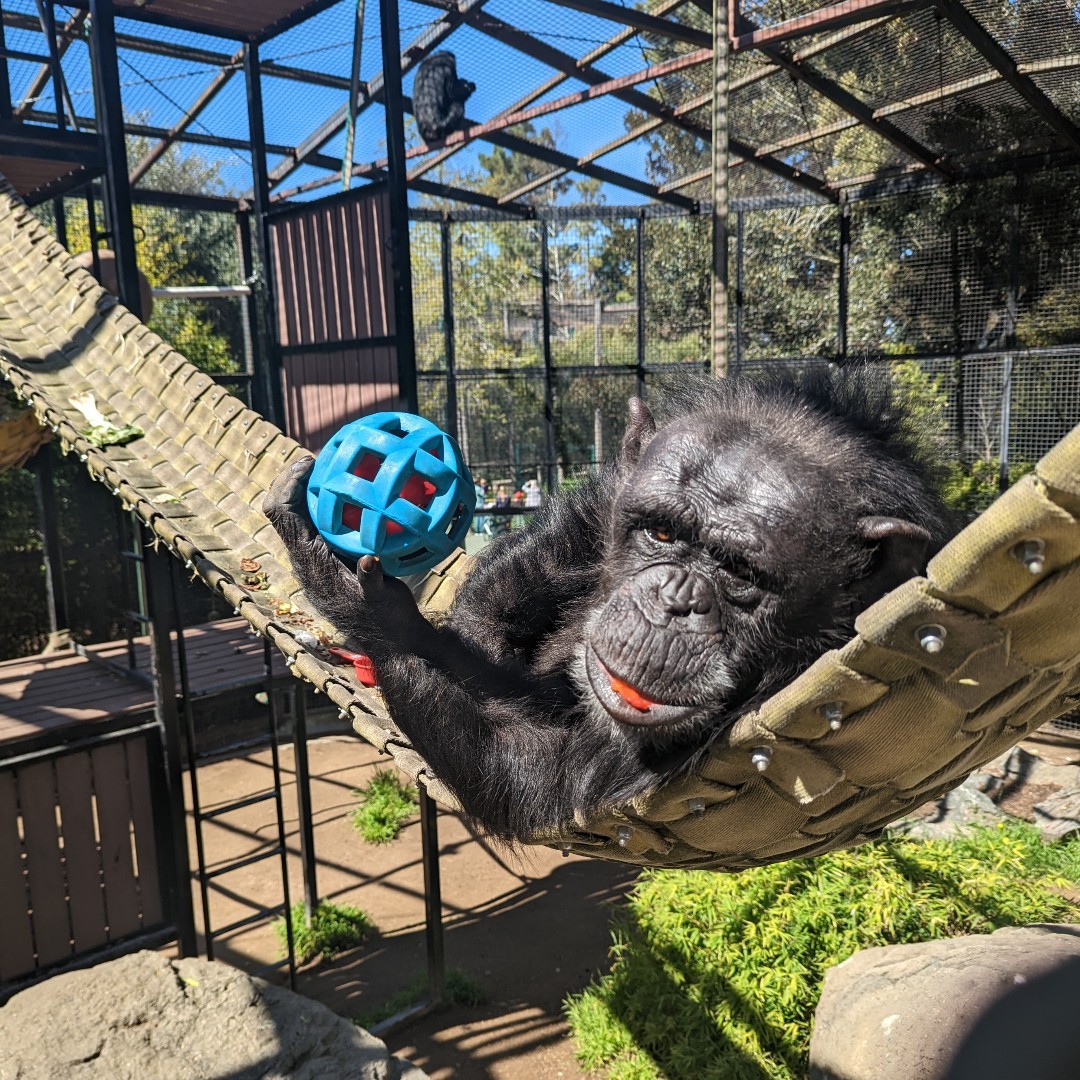Summary:
– Introduction to Hammock Day and its significance
– The joy and relaxation of hammock lounging
– The connection between primates and hammocks
– Exploring the benefits of hammocks for primates in zoos
– Promoting conservation and environmental awareness through zoos
Andi the Chimp and the Fascinating Hammock Day
Ah, Hammock Day! It’s that blissful time of year when we can all embrace the art of laziness and surrender to the soothing sway of a hammock. Whether you’re sprawled out in your backyard or gently swinging in a serene corner of a zoo, the allure of the hammock knows no bounds. Today, we delve into the captivating world of Hammock Day from the perspective of our lovable primate friend, Andi the Chimp, and his keeper, Elisa.
Part 1: Relaxation and Restoration
Imagine a picture-perfect scene where you’re reclining in a comfortable hammock while the gentle breeze caresses your face. Hammocks are the epitome of relaxation, offering a tranquil nook to unwind and find solace amid the hustle and bustle of modern life. Andi, the mischievous chimp, understands the importance of leisure and rejuvenation, and Hammock Day provides the perfect opportunity for him to bask in the pleasure of doing nothing.
Part 2: Primates and Hammocks
Primates have long held a special affinity for hammocks, discovering their restful qualities long before humans popularized them. As our closest relatives in the animal kingdom, primates enjoy the physical comfort of hammocks and find solace and emotional support in their gentle sway. Their biological connection to hammocks is a testament to the deep-rooted connection between nature and its inhabitants.
Part 3: From Zoos to Conservation
But what role do hammocks play in the world of zoos, you might ask? While zoos primarily aim to safeguard and conserve animal species, they also strive to recreate natural habitats as much as possible. Zoos have embraced hammocks to provide primates with an enriching and stimulating environment. These flexible, suspended havens mimic the branches and vines in their natural habitats, allowing primates to indulge in instinctive behaviors like swinging, playing, and socializing.
Part 4: For the Love of Primates
Beyond the recreational aspect, hammocks serve a crucial purpose in primate conservation. Keepers gain valuable insights into their behavioral patterns, preferences, and overall well-being by closely observing how primates interact with their hammock sanctuaries. These observations help prioritize each primate’s physical and psychological needs, ensuring their health and happiness are prioritized.
Part 5: Zoos as Conservation Catalysts
Through their efforts to provide hammocks and other stimulating environmental elements, zoos are also powerful advocates for wildlife preservation. By presenting primates in their natural habitat-like settings, zoos educate visitors about the importance of nature conservation and inspire them to take action. The mesmerizing sight of Andi the Chimp swaying contently in his hammock reminds gently of the interconnectedness between animals and their environment.
Conclusion:
As Hammock Day comes to a close, let us reflect on the joy and relaxation these humble fabric slings bring to humans and primates alike. From the idyllic moments of unwinding in our backyards to the conservation efforts propelled by zoos, hammocks remind us of the simple pleasure of surrendering to nature’s embrace. So, the next time you stumble upon a primate swinging gently in a zoo hammock, take a moment to appreciate the fascinating bond we share with these magnificent creatures and the incredible influence nature has on all our lives. Embrace the charm of the hammock, and let it carry you away to a place of tranquility, harmony, and a deeper connection with the natural world.
*****
Source Description
Hammock Day is in full swing
Andi chimp 📸: Keeper Elisa


